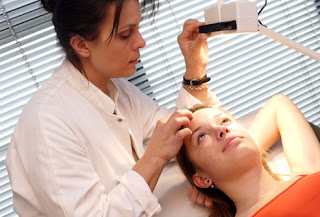The best way to prevent moles from growing is to have a diet that has high content of potassium. Foods like bananas, apples and potatoes are a great source of potassium.
Vegetables that are rich in vitamin A are also good to prevent moles from forming. Fruits and vegetables that are rich in vitamin C and vitamin E are also essential for mole prevention.
The use of sun screen or sun block is essential to mole prevention. This measure would prevent the skin from over producing melanin which plays a major role in mole formation.
Use skin care cream that hydrates and provides essential vitamins and minerals for skin repair. Skin creams normally are abstracts from plants which block moisture from leaving the surface of the skin. This action in return keeps the skin moist and hydrated for a longer period, as compared to without any cream. The moisture retains the shape and texture of the skin cells even in dry, air-conditioned, or sun exposed environments.
Avoid eating oily and spicy food. Food that is oily and spicy tends to activate the oil glands under the skin, providing an environment which is conducive for mole growth. Oily skin also is the perfect home for the growth of bacteria which can lead to acne and other skin conditions.
Drink plenty of water. Water is essential to keep the body's fluids in balance. It also helps flush the system from acidic or alkaline buildup in the body. Water helps the skin to hydrate and repair itself. Normal water consumption of 6 to 8 glasses per day is essential to keep the body hydrated. Water is the single most important element that acts as a medium to send electrolytes and nutrients that the skin needs to repair itself from damage caused by the harsh environment.
Exercise is another way to detoxify the body of unwanted fluids. Exercise helps blood circulation as well as providing the flow of nutrients and minerals to all parts of the body. Exercise also enables the sweat glands under the skin to work normally as it should and thus, creating a more healthy and resilient layer of skin.
Around 8 hours of sleep a day is essential for skin cells to repair itself from damage caused during the day. It is this time that the skin can regenerate new cells and repair damaged skin cells. Therefore, sleep does play an important role in keeping the skin looking radiant.
Vegetables that are rich in vitamin A are also good to prevent moles from forming. Fruits and vegetables that are rich in vitamin C and vitamin E are also essential for mole prevention.
The use of sun screen or sun block is essential to mole prevention. This measure would prevent the skin from over producing melanin which plays a major role in mole formation.
Use skin care cream that hydrates and provides essential vitamins and minerals for skin repair. Skin creams normally are abstracts from plants which block moisture from leaving the surface of the skin. This action in return keeps the skin moist and hydrated for a longer period, as compared to without any cream. The moisture retains the shape and texture of the skin cells even in dry, air-conditioned, or sun exposed environments.
Avoid eating oily and spicy food. Food that is oily and spicy tends to activate the oil glands under the skin, providing an environment which is conducive for mole growth. Oily skin also is the perfect home for the growth of bacteria which can lead to acne and other skin conditions.
Drink plenty of water. Water is essential to keep the body's fluids in balance. It also helps flush the system from acidic or alkaline buildup in the body. Water helps the skin to hydrate and repair itself. Normal water consumption of 6 to 8 glasses per day is essential to keep the body hydrated. Water is the single most important element that acts as a medium to send electrolytes and nutrients that the skin needs to repair itself from damage caused by the harsh environment.
Exercise is another way to detoxify the body of unwanted fluids. Exercise helps blood circulation as well as providing the flow of nutrients and minerals to all parts of the body. Exercise also enables the sweat glands under the skin to work normally as it should and thus, creating a more healthy and resilient layer of skin.
Around 8 hours of sleep a day is essential for skin cells to repair itself from damage caused during the day. It is this time that the skin can regenerate new cells and repair damaged skin cells. Therefore, sleep does play an important role in keeping the skin looking radiant.












